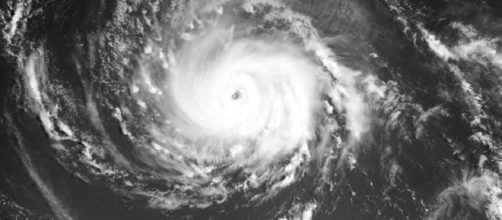Hurricane Harvey's winds may have died down and the flooding may be receding, but the images of the disaster continue to roll in and keep the natural disaster fresh in the minds of millions of Americans. As the Texas Gulf Coast starts the process of cleaning up from Harvey, Hurricane Irma is building in intensity in the Atlantic Ocean as it barrels toward the Caribbean. Many officials and average Americans bemoaned the lack of lessons learned in the United States from past hurricanes. The most significant in recent memory prior to Harvey was Hurricane Katrina.
The question now bubbling in many minds as Irma builds in size and intensity is whether or not Miami could be the next Houston.
Hurricane Irma builds in Atlantic Ocean
Hurricane Irma has slowly been winding its way through the Atlantic Ocean over the course of the week, building quickly in intensity as a Category 3 hurricane. More than a dozen Leeward Islands in the Caribbean are already under hurricane watch throughout the early portions of the week, as the storm is already packing a punch that includes heavy rains, damaging winds, and storm surges.
While the immediate threat from Hurricane Irma is focused on the Leeward Islands of the Caribbean, early models suggest a good probability that Irma could strike the Florida Keys and southern tip of the state by Friday or Saturday of this week.
With estimates on Hurricane Harvey damage along the Texas Gulf Coast already exceeding $100 billion before clean up even gets underway in force, there is growing concern that Miami could be the next American city to flood.
A direct hit could make Miami a second Houston
Disaster planners have been ringing the alarm bells for years about the preparedness, or lack thereof, along the US East Coast.
Super Storm Sandy showed just how vulnerable major metropolitan areas like New York City are to storms. However, there's one city that experts fear could be the site of an even more devastating repeat of Houston. The city of Miami hasn't suffered a direct hit from a hurricane in 91 years.
In 1926, Miami was struck by a Category 4 storm known today as the Great Miami Hurricane.
At the time, though, it was a remote resort town with just 100,000 full-time residents. Today, Miami is a city that is home to more than 6 million people living right along the southeast coast of Florida in prime range of any hurricanes during the Atlantic season. Houston showcased the dangers of urban sprawl when it comes to dealing with storm surges and heavy rain. Houston's open lands and bayous have been built over as the city grew, robbing the environment of space to soak in water and creating man-made disasters as impenetrable concrete jungles provide easy flow for raging torrents of rain.
Disaster planners in South Florida need to look at Hurricane Irma with a wary eye. If the storm moves northward and strikes Florida, Miami could suffer the same fate as Houston.
Decades of urban sprawl have resulted in loss of land in South Florida, particularly in the Everglades where the natural swamps once provided a sponge to soak up torrential rains.
The 1926 Great Miami Hurricane claimed 400 lives, compared to 49 in Houston so far, and remains one of the 10 deadliest hurricanes in American history. Today, 6 million people potentially sit in the path of Hurricane Irma as it moves through the Atlantic and into the Caribbean. In a city already dealing with flooding from high tides on a weekly basis, a direct hit from Irma could bring devastation greater than Harvey at a time when the nation is just coming to grips with one disaster.


